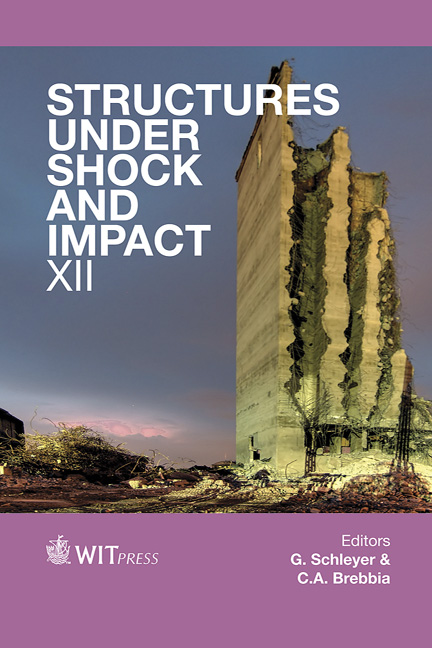Progressive Collapse Analysis Of A High-rise Building Considering The Effect Of An Outriggerbelt Lateral Load Resisting System
Price
Free (open access)
Transaction
Volume
126
Pages
10
Page Range
293 - 302
Published
2012
Size
1,685 kb
Paper DOI
10.2495/SU120261
Copyright
WIT Press
Author(s)
J. M. Mirhom, H. T. Hafez, K. N. Ibrahim, J. R. Shaker & M. Abdel-Mooty
Abstract
The effect of an outrigger and belt system, mainly provided for resisting lateral wind and seismic loads, on the progressive collapse analysis of a 52 floor high rise building is presented in this paper. The main lateral load resisting element of the building is reinforced concrete core located at the centre of the building. In addition to the RC core walls, two outrigger and belt systems are introduced at the top of the building and at its mid-height. Each system is made of four steel trusses connecting the façade columns to the central reinforced concrete core. Each outrigger system is provided by a belt truss that links all columns on the façade to the outrigger trusses. The purpose of progressive collapse analysis in this paper is to study alternative load paths that eliminates the total collapse and minimizes the local damage and failure of the building. Nonlinear dynamic progressive collapse analysis is carried out where selected columns at the ground level are suddenly removed. This simulates the effect of accidental explosion near the building facade. The nonlinear dynamic analysis is carried out using ELS software (Extreme Loading for Structures) utilizing applied element technique. Different factors that affect the building response to progressive collapse scenarios are studied and presented in this work. Keywords: blast design, progressive collapse, outrigger-belt system, applied element.
Keywords
blast design, progressive collapse, outrigger-belt system, applied element





